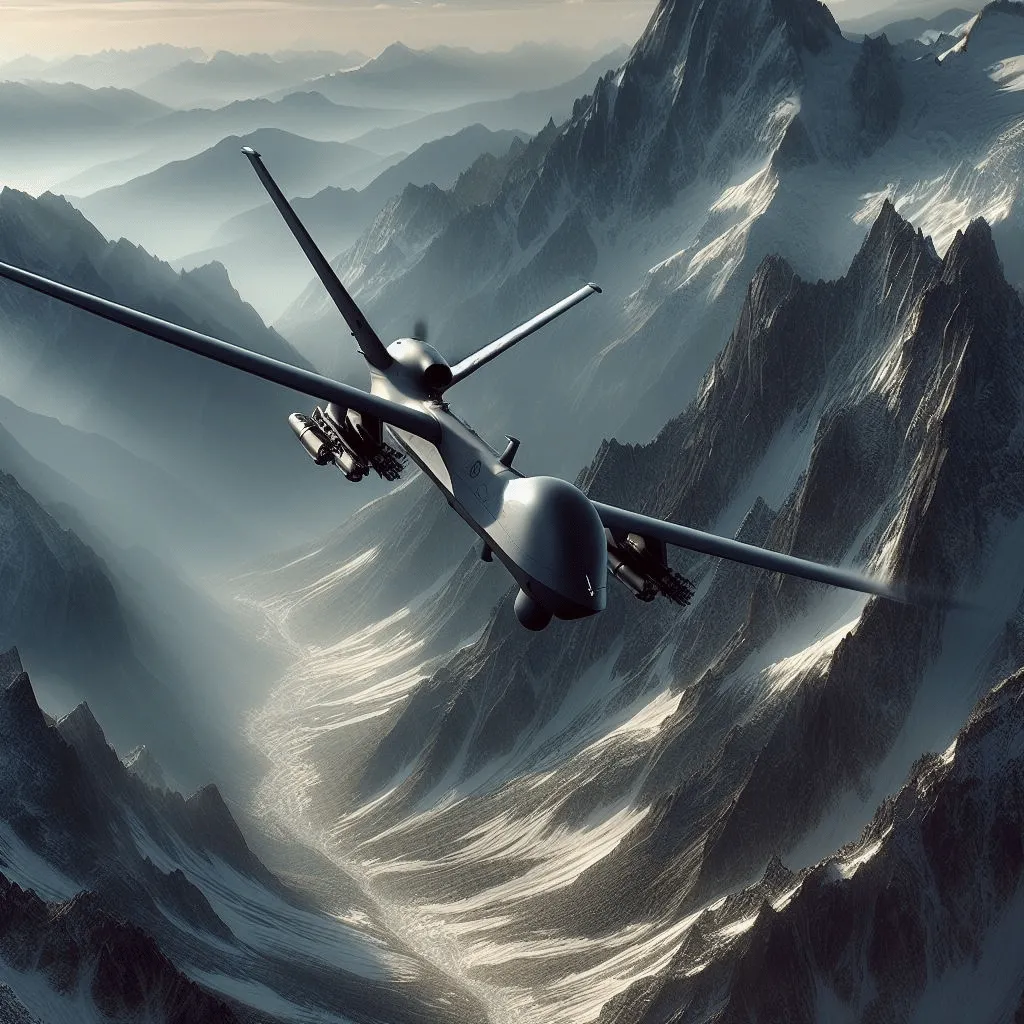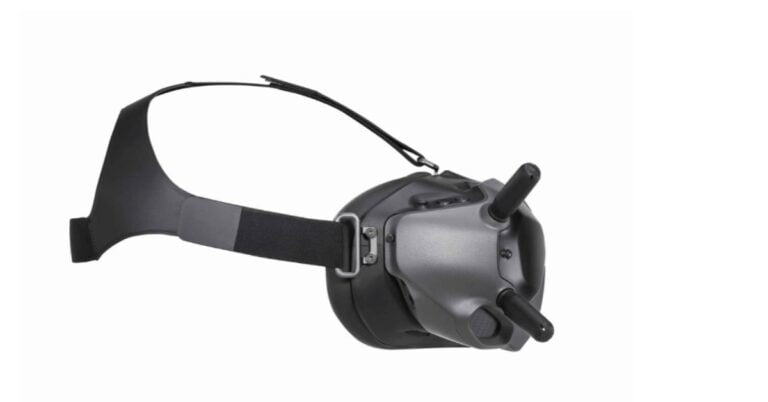How Long can a Military Drone Fly? (At Least How Long?)

When it comes to military drones, their capabilities and endurance play a crucial role in their effectiveness on the battlefield.
These unmanned aerial vehicles (UAVs) have revolutionized modern warfare, providing intelligence, surveillance, and reconnaissance capabilities, as well as the ability to carry out targeted strikes.
One of the key factors that determine a military drone’s effectiveness is its flight duration.
In this article, we will delve into the question that many enthusiasts and military strategists often ask: how long can a military drone fly?
We will explore the various factors that influence a drone’s flight time, the different types of drones used by the military, and the technologies employed to extend their endurance.
How long can a military drone fly?
Military drones, also known as unmanned aerial vehicles (UAVs), are aircraft that can fly without a human pilot on board. They are used for various purposes, such as intelligence, surveillance, reconnaissance, target acquisition, and communication relay.
The flight duration of military drones depends on several factors, such as the type, size, weight, payload, propulsion, and power source of the drone.
Some Examples
Some of the longest-range military drones in the world are the Zephyr, the Global Observer, and the Orion. The Zephyr is a solar-electric stratospheric UAV developed by Airbus Defence and Space.
It can fly for months continuously at an altitude of up to 70,000 feet and carry payloads of up to 140 kg. The Global Observer is a hydrogen-fuelled stratospheric UAV developed by AeroVironment.
It can loiter in the air for up to one week or 168 hours at an altitude of up to 65,000 feet and carry payloads of up to 181 kg.
The Orion is a long-endurance UAV developed by Aurora Flight Sciences. It can endure airborne for a maximum of 36 hours at an altitude of up to 30,000 feet and carry payloads of up to 453 kg.
Another Example
Other examples of military drones with long flight durations are the RQ-4 Global Hawk, the MQ-9 Reaper, and the Heron.
The RQ-4 Global Hawk is a high-altitude long-endurance (HALE) UAV developed by Northrop Grumman.
It has a range of more than 12,000 nautical miles, the ability to fly at heights of up to 60,000 feet, and the ability to remain airborne for 34 hours.
The MQ-9 Reaper is a medium-altitude long-endurance (MALE) UAV developed by General Atomics.
It has a range of 1,150 nautical miles, the ability to fly at heights of up to 50,000 feet, and the ability to remain airborne for 27 hours.
The Heron is a MALE UAV developed by Israel Aerospace Industries. It has a range of 2,000 nautical miles, the ability to fly at heights of up to 35,000 feet, and the ability to remain airborne for 52 hours.

Specific Example
The flight duration of military drones is constantly improving as new technologies and innovations are introduced.
For example, in August 2022, a test flight of the Zephyr drone lasted for 64 days and would have broken the world record for the longest flight if it stayed airborne for just another day.
Read More: What is Payload Mode on a DJI Mini 2? A Comprehensive Guide
What are the factors that influence a military drone’s flight time?
The longer a drone can stay in the air, the more information it can gather and the better it can support military operations.
Several factors influence a military drone’s flight time, and understanding them is crucial for optimizing their performance.
Battery Capacity
The battery capacity is a significant factor that determines how long a military drone can stay airborne. Drones with larger battery capacities can fly for extended periods without needing to land and recharge.
Battery technology has significantly improved over the years, enabling drones to have longer flight times.
However, it is essential to strike a balance between battery capacity and the weight it adds to the drone, as heavier batteries can affect maneuverability and overall performance.
Aerodynamics
The aerodynamic design of a military drone plays a vital role in its flight time. Drones with sleek and streamlined designs experience less air resistance, allowing them to fly more efficiently and consume less power.
Additionally, the use of lightweight materials in the construction of the drone can improve its overall aerodynamics, leading to longer flight times.

Payload
The payload carried by a military drone can impact its flight time. Heavier payloads require more power to lift and sustain in the air, reducing the overall flight time.
It is crucial to optimize the payload weight to ensure a balance between mission requirements and flight duration.
Weather Conditions
Weather conditions can significantly affect a military drone’s flight time. Strong winds, extreme temperatures, and precipitation can increase the power consumption and reduce the efficiency of the drone’s propulsion system.
It is essential to consider weather conditions when planning drone missions to ensure optimal flight time.
More: Can You See Military Drones in The Sky? (Explained)
Can a military drone fly for 2 hours?
Yes, many military drones can fly for 2 hours. In fact, it’s quite common for small tactical drones and some medium-sized reconnaissance drones to have a flight time ranging from 1 to 2 hours. These drones are often used for:
Examples of drones with a flight time around 2 hours include:
However, it’s important to remember that factors like payload weight, weather conditions, and mission requirements can all affect a drone’s actual flight time.
For instance, carrying heavier equipment or encountering strong winds might reduce the flight time below 2 hours.

On the other hand, larger drones designed for long-endurance missions can easily surpass 2 hours and stay airborne for much longer periods.
For example, the MQ-1C Gray Eagle Extended Range can fly for up to 36 hours, while the Airbus Zephyr S holds the record for the longest sustained drone flight at 64 days powered by solar energy.
So, whether a military drone can fly for 2 hours depends heavily on its specific type and the intended mission.
More: What Are The Different Types of Drones?
What is the maximum range of military drones?
Military drones can vary in size, shape, design, and performance, depending on their mission and role. One of the factors that determines the performance of a military drone is its range, which is the maximum distance it can fly from its launch point or control station.
The range of a military drone depends on several factors, such as its fuel capacity, engine type, payload weight, altitude, speed, and weather conditions.
According to some sources , the range of military drones can be classified into four categories:
Some examples of military drones in each category are:
The longest range military drone in the world is the Zephyr , a solar-electric stratospheric UAV developed by Airbus Defence and Space. It can fly for months continuously at an altitude of 70,000 ft / 21,336 m and has a maximum range of over 25 days or more than 37,000 km / 23,000 mi.

The longest range military drone powered by liquid fuel is the Orion , a long-endurance UAS developed by Aurora Flight Sciences for the US Air Force. It can fly for up to one week or 168 hours at an altitude of 65,000 ft / 19,812 m and has a maximum range of over 16,000 km / 10,000 mi.
More: What Are The Future Uses Of Drones?
What are the various types of military drones, and how do they compare in terms of their operational range?
Military drones can be categorized based on their design, function, and range. The design of a drone refers to its shape and structure, such as fixed-wing, rotary-wing, or hybrid.
The function of a drone refers to its purpose and application, such as intelligence, surveillance, reconnaissance, target acquisition, decoy, or research and development. The range of a drone refers to the distance it can travel from its launch point or control station.
Now, let’s know about some of the types and the difference between them.
1. Reconnaissance Drones
Reconnaissance drones, also known as surveillance drones, are primarily used for intelligence gathering and monitoring enemy activities.
These drones are equipped with high-resolution cameras and sensors to capture real-time imagery and collect vital information.
With an operational range of up to 150 kilometers, reconnaissance drones play a crucial role in providing situational awareness to military commanders.
2. Combat Drones
Combat drones, also called attack drones, are designed for offensive operations. These drones are armed with missiles, bombs, or other munitions, enabling them to engage targets with precision strikes.
With an operational range of around 250 kilometers, combat drones offer a significant advantage in terms of firepower and flexibility on the battlefield.

3. Strategic Drones
Strategic drones are large-scale, long-endurance UAVs that are capable of flying thousands of kilometers.
These drones are primarily used for strategic reconnaissance, surveillance, and long-range precision strikes.
With an operational range exceeding 5,000 kilometers, strategic drones provide military forces with extended reach and the ability to project power over vast distances.
4. Tactical Drones
Tactical drones are versatile UAVs that are designed for shorter-range operations. These drones are typically used for close air support, target acquisition, and battlefield monitoring.
With an operational range of up to 50 kilometers, tactical drones offer real-time situational awareness and can be rapidly deployed to support ground forces.
While each type of military drone serves a specific purpose, their operational ranges vary depending on their intended use.
From short-range tactical drones to long-range strategic drones, these unmanned systems have revolutionized modern warfare, providing militaries with enhanced capabilities and improved operational effectiveness.
Final Thoughts – How Long can a Military Drone Fly?
Our conversation has explored the fascinating world of military drones, delving into their diverse types, operational ranges, and the factors influencing their capabilities.
We’ve seen how these unmanned aerial vehicles revolutionize warfare, extending eyes and ears far beyond traditional boundaries.
As technology continues to evolve, the future of military drones promises even greater feats. Increased ranges, longer endurance, and enhanced AI integration point towards a future where drones handle complex missions autonomously, reshaping battlefields and intelligence gathering.

Beyond the technical marvels, ethical considerations and responsible uses remain paramount. Ensuring transparency, minimizing civilian casualties, and adhering to international laws are crucial aspects of integrating drones into warfare.
Ultimately, understanding the intricacies of military drones, acknowledging their potential and limitations, and fostering responsible usage is essential for navigating the ethical and strategic landscape of modern warfare.
The skies above are increasingly filled with the buzz of drone wings, and our understanding of these technological marvels shapes the future of conflict and security.
Let’s continue to explore, analyze, and engage in thoughtful discourse to ensure that these powerful tools are wielded for good.
FAQs
Artificial intelligence is increasingly utilized in military drones to optimize flight paths, manage power consumption, and enhance overall efficiency. These advancements contribute to extended flight durations and improved mission capabilities.
Ongoing developments in battery technology play a crucial role in enhancing military drone flight times. Improved energy density and lightweight materials contribute to longer endurance, allowing drones to stay airborne for extended periods.
Yes, weather conditions such as strong winds, extreme temperatures, and precipitation can impact a military drone’s flight time. Adverse weather conditions can increase power consumption and reduce the efficiency of the drone’s propulsion system.
Absolutely. Continuous research and development efforts focus on introducing new technologies and innovations to enhance military drone capabilities. These efforts aim to push the boundaries of flight durations and improve overall performance.
The size, weight, and payload capacity of a military drone significantly influence its flight time and maneuverability. Striking a balance between battery capacity, payload weight, and overall design is crucial for optimizing performance and mission effectiveness.







